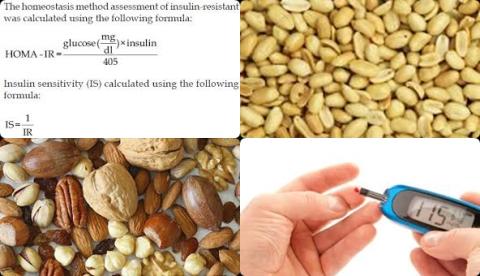
Objectives:
Observational evidence suggests higher nut consumption is associated with better glycemic control. However, it is unclear if this association is causal. Therefore, this review article has been conducted.
Is there a causal relationship between consumption of tree nuts or peanuts and reduced risk of type 2 diabetes?
Study design:
This review article included a total of 40 RCTs with 2,832 unique participants, with a median duration of 3 months (range: 1-12 months).
Results and conclusions:
The investigators found overall consumption of tree nuts or peanuts had a favourable effect on HOMA-IR values [WMD = -0.23, 95% CI = -0.40 to -0.06, I2 = 51.7%] and fasting insulin levels [WMD = -0.40 μIU/mL, 95% CI = -0.73 to -0.07 μIU/mL, I2 = 49.4%].
The investigators found, however, there was no significant effect of nut consumption on fasting blood glucose levels [WMD = -0.52 mg/dL, 95% CI = -1.43 to 0.38 mg/dL, I2 = 53.4%] or HbA1c [WMD = 0.02%, 95% CI = -0.01% to 0.04%, I2 = 51.0%].
The investigators concluded consumption of peanuts or tree nuts decreases HOMA-IR and fasting insulin levels. These findings suggest that nut consumption may improve insulin sensitivity. In the future, well-designed clinical trials are required to elucidate the mechanisms that account for these observed effects.
Original title:
The effect of nuts on markers of glycemic control: a systematic review and meta-analysis of randomized controlled trials by Tindall AM, Johnston EA, […], Petersen KS.
Link:
https://www.ncbi.nlm.nih.gov/pubmed/30722007
Additional information of El Mondo:
Find more information/studies on diabetes and nut consumption right here.